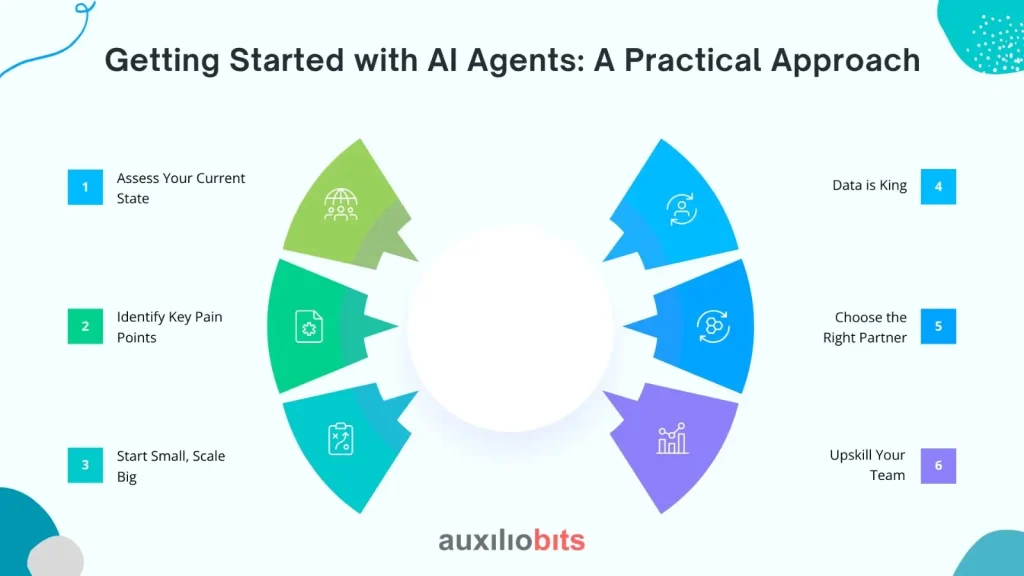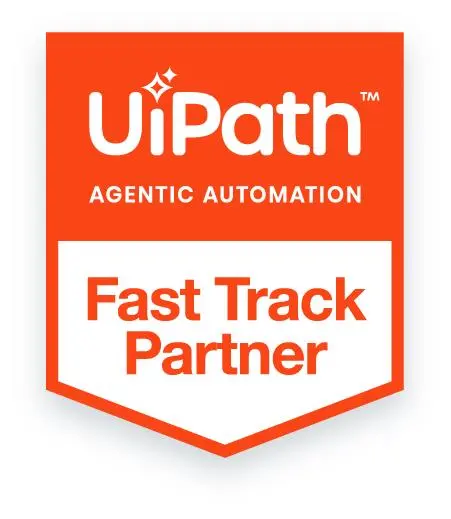
Key Takeaways
- Inventory Holding Costs are a Significant Drain: Beyond just warehouse rent, these costs encompass capital tied up, storage, insurance, and the substantial risks of obsolescence, shrinkage, and deterioration. They can range from 15% to 30% of inventory value annually, severely impacting profit margins.
- Traditional Inventory Management is Prone to Error and Inefficiency: Reliance on historical data, manual processes, lack of real-time visibility, and slow reactions to market changes lead to overstocking, stockouts, and inflated operational expenses.
- AI Agents Revolutionize Demand Forecasting: By analyzing vast and diverse datasets (historical sales, external factors like weather and social media trends, economic indicators), AI agents provide incredibly granular and real-time demand predictions, significantly reducing overstocking and the associated holding costs.
- Automation and Optimization are Core AI Benefits: AI agents automate tasks like dynamic stock level monitoring and reordering, calculate optimal order quantities, and optimize supplier relationships. This leads to reduced manual labor, improved cash flow, and the potential for Just-In-Time (JIT) inventory strategies.
- AI Enhances Every Aspect of Inventory Management: From optimizing warehouse layouts and logistics routes to enabling predictive maintenance and detecting anomalies like theft or damage, AI agents create a more efficient, agile, and resilient inventory system, directly contributing to substantial cost reductions and a more profitable operation.
In today’s hyper-competitive global market, businesses are constantly seeking ways to optimize operations, enhance efficiency, and, most critically, slash costs. One area that often presents a significant financial burden is inventory holding costs. These aren’t just about warehousing; they encompass a wide range of expenses, from storage and insurance to obsolescence and depreciation. For many companies, excessive inventory acts like a financial black hole, tying up capital and eroding profit margins.
But what if there was a way to navigate this complex space with unparalleled precision and foresight? Well, AI agents do all the magic. These intelligent, autonomous systems are revolutionizing inventory management, transforming it from a reactive, guesswork-driven process into a proactive, data-powered strategy. By leveraging the power of artificial intelligence, businesses can achieve a lean, agile, and highly profitable inventory system, significantly reducing those burdensome holding costs.
Also read: Technical Architecture of Computer Vision for Warehouse Inventory.
The Hidden Drain: Understanding Inventory Holding Costs
Before we dive into how AI agents provide a solution, let’s unpack what exactly constitutes inventory holding costs. It’s more than just the rent on your warehouse!
What are Inventory Holding Costs?
Inventory holding costs, also known as carrying costs, are the expenses associated with storing unsold inventory. These costs can be broken down into several key categories:
- Capital Costs: This is often the largest component. It represents the opportunity cost of having capital tied up in inventory rather than invested elsewhere. Imagine money sitting on a shelf, not earning any returns.
- Storage Costs: This includes rent or mortgage payments for warehouse space, utilities (electricity, heating, cooling), maintenance, and property taxes. The larger your inventory, the more space you need, and the higher these costs become.
- Service Costs: These are expenses related to managing and protecting your inventory. Think insurance premiums, material handling equipment costs (forklifts, conveyors), and the wages of warehouse staff involved in moving, tracking, and organizing stock.
- Risk Costs: This category covers the potential losses associated with holding inventory.
- Obsolescence: Products becoming outdated, damaged, or no longer in demand. Think last season’s fashion or yesterday’s tech gadget.
- Shrinkage: Losses due to theft, damage, or administrative errors (e.g., miscounts).
- Deterioration/Spoilage: Perishable goods expiring or products degrading over time.
These costs, often overlooked or underestimated, can collectively represent a significant percentage of your inventory’s value, typically ranging from 15% to 30% annually! 📉 This means for every $1 million in inventory you hold, you could be spending $150,000 to $300,000 just to keep it in your warehouse.
The Traditional Inventory Conundrum: Why It’s So Hard
Historically, inventory management has been a balancing act, often fraught with challenges:
- Inaccurate Demand Forecasting: Relying on historical sales data alone often leads to overstocking (tying up capital) or understocking (missing sales opportunities and disappointing customers).
- Manual Processes & Human Error: Manual tracking, counting, and ordering are prone to mistakes, leading to discrepancies, delays, and wasted resources.
- Lack of Real-time Visibility: Many businesses struggle with knowing exactly what they have, where it is, and its current status across their supply chain.
- Inefficient Warehouse Operations: Suboptimal layouts, picking routes, and storage strategies inflate labor and space costs.
- Slow Reaction to Market Changes: Traditional systems can’t adapt quickly to sudden shifts in consumer demand, supplier disruptions, or unexpected events.
These challenges directly inflate inventory holding costs. So, how do AI agents cut through this complexity?
The AI Agent Advantage: A Paradigm Shift in Inventory Management
AI agents, powered by machine learning (ML), predictive analytics, and advanced algorithms, offer a sophisticated solution to these long-standing inventory challenges. They don’t just process data; they learn, adapt, and make intelligent, autonomous decisions, optimizing every facet of your inventory lifecycle.
1. Superior Demand Forecasting: The Crystal Ball Effect
One of the most impactful ways AI agents reduce holding costs is through their unparalleled ability to forecast demand.
- Beyond Historical Data: Unlike traditional methods that largely rely on past sales, AI agents ingest and analyze vast, diverse datasets. This includes historical sales, of course, but also external factors like:
- Seasonal trends
- Promotional activities and marketing campaigns
- Economic indicators (e.g., inflation, consumer confidence)
- Weather patterns (e.g., predicting demand for umbrellas during monsoon season)
- Social media trends and consumer sentiment
- Competitor activities
- Geopolitical events and supply chain disruptions
- Granular Predictions: AI can forecast demand at an incredibly granular level—for specific SKUs, sizes, colors, and even individual store locations. This level of detail is impossible for human analysts to achieve.
- Real-Time Adaptability: AI models continuously learn and adjust their predictions in real-time as new data emerges. If there’s a sudden surge or dip in demand, the AI agent will quickly identify it and recommend adjustments to stock levels.
- Impact on Holding Costs: By predicting demand with unprecedented accuracy, AI agents ensure you hold just the right amount of stock. This directly translates to:
- Reduced Overstocking: Less capital tied up, lower storage costs, and significantly reduced risk of obsolescence or spoilage. Companies like Levi’s have seen improved supply chain efficiency and reduced waste through AI-powered demand forecasting.
- Minimized Stockouts: While stockouts don’t directly add to holding costs, they lead to lost sales and dissatisfied customers. By ensuring optimal stock, AI indirectly boosts revenue and customer loyalty, contributing to overall financial health.
2. Automated Inventory Optimization & Replenishment: The Self-Managing Warehouse
AI agents automate and optimize key inventory processes, freeing up human resources and eliminating errors.
- Dynamic Stock Level Monitoring: AI systems constantly monitor stock levels across all locations, from central warehouses to individual retail shelves. Using IoT sensors and RFID tags, they provide real-time visibility into every item’s location and status.
- Automated Reordering: When stock falls below predetermined optimal thresholds (calculated by AI, considering lead times and demand forecasts), AI agents can automatically trigger purchase orders. This removes manual intervention, reduces human error, and ensures timely replenishment.
- Supplier Relationship Optimization: AI can analyze supplier performance metrics such as delivery times, quality, and pricing. This helps businesses choose the most reliable and cost-effective partners, negotiate better terms, and identify potential risks before they escalate, further streamlining procurement costs.
Impact on Holding Costs:
- Reduced Manual Labor: Automating tasks like counting, ordering, and reporting significantly cuts down on labor costs associated with inventory management.
- Optimal Order Quantities: AI calculates the most economical order quantities, balancing purchasing costs with holding costs, often implementing Just-In-Time (JIT) strategies where feasible.
- Improved Cash Flow: Less money is tied up in excess inventory, improving liquidity and allowing capital to be reinvested in growth initiatives.
3. Smart Warehouse Operations & Logistics: Maximizing Space & Speed
Beyond just stock levels, AI agents enhance the physical management of inventory within the warehouse and across the supply chain.
- Optimized Warehouse Layout and Slotting: AI algorithms can analyze product sizes, demand patterns, and turnover rates to recommend the most efficient storage configurations. High-demand items can be placed closer to shipping areas, minimizing picking times and improving workflow.
- Intelligent Route Optimization: For internal warehouse movements (e.g., forklift paths for picking) and external logistics (delivery routes), AI analyzes real-time data like traffic patterns, fuel costs, and delivery constraints to determine the most efficient routes. This reduces travel time, fuel consumption, and vehicle wear.
- Robotics and Automation Integration: AI powers autonomous mobile robots (AMRs) and other automated systems for tasks like picking, packing, and sorting. These robots operate with high precision, speed, and 24/7 availability, drastically reducing labor costs and improving accuracy.
Impact on Holding Costs:
- Reduced Space Utilization Costs: More efficient storage means you may need less warehouse space, or you can utilize existing space more effectively, deferring the need for expansion.
- Lower Labor Costs: Automation of repetitive tasks reduces the need for extensive manual labor in the warehouse.
- Faster Inventory Turnover: Streamlined operations ensure products move through the supply chain more quickly, reducing the time they spend incurring holding costs.
4. Anomaly Detection and Risk Mitigation: Guarding Your Assets
AI agents are excellent at identifying unusual patterns that might indicate problems, preventing costly issues.
- Identifying Discrepancies: AI can flag unusual inventory movements, discrepancies between recorded and physical stock, or sudden, unexplained changes in sales patterns. These could indicate theft, damage, or data entry errors.
- Predictive Maintenance: AI can monitor the performance of material handling equipment and predict potential breakdowns, allowing for proactive maintenance rather than costly emergency repairs or downtime that impacts inventory flow.
- Supply Chain Risk Assessment: AI analyzes data to identify potential vulnerabilities in your supply network, such as supplier reliability issues or geopolitical risks, allowing you to diversify sourcing or pre-empt disruptions.
Impact on Holding Costs:
- Reduced Shrinkage: Early detection of theft or errors helps prevent losses.
- Minimized Damage and Obsolescence: By identifying slow-moving or at-risk inventory, AI can prompt actions like promotions or liquidations before products become unsellable.
- Enhanced Data Accuracy: Accurate inventory records reduce administrative overhead and improve decision-making.
Real-World Impact: AI in Action
The benefits of AI agents in reducing inventory holding costs are not theoretical; they are being realized by leading companies across various industries:
- Retail Chains: Companies are seeing significant reductions in stockouts (up to 30%) and excess inventory carrying costs (up to 25%) by implementing AI-driven analytics for demand forecasting and inventory optimization. This frees up capital and improves product availability.
- Manufacturing Companies: AI helps manufacturers adjust procurement strategies and production schedules based on precise demand forecasts, leading to substantial reductions in inventory holding costs and improved operational efficiency.
- E-commerce Giants: Online retailers leverage AI for hyper-granular demand prediction and automated fulfillment, ensuring products are in the right distribution centers at the right time, minimizing storage and shipping costs. Amazon, for example, uses AI to predict demand for specific products during peak seasons, dynamically adjusting inventory levels.
- Fashion Industry: Brands like Zara utilize AI agents to analyze sales data and predict demand trends in real-time, enabling rapid replenishment of popular styles and preventing overstocking of seasonal items.
These examples underscore the tangible financial gains and operational efficiencies that AI agents bring to the table. According to reports, companies adopting AI in inventory management can see overall operational cost reductions of 15-25% and a return on investment (ROI) within 6-18 months.
The Future is Autonomous: Embracing AI for a Leaner Tomorrow
The role of AI agents in inventory management is only set to expand. We’re moving towards a future where supply chains are not just automated but are hyper-automated and self-optimizing.
- Digital Twins: Creating virtual replicas of your entire supply chain and inventory, allowing AI to simulate scenarios, test strategies, and predict outcomes without real-world disruption.
- Predictive Logistics: AI will not only optimize routes but also predict potential delays, adverse weather conditions, or traffic issues, and proactively reroute shipments or adjust delivery schedules.
- Ethical AI & Sustainability: AI will increasingly be used to optimize inventory for sustainability goals, reducing waste from expired goods, minimizing transportation emissions, and enabling circular economy models.
- Continuous Learning: AI models will become even more sophisticated, learning from every transaction, every market shift, and every unforeseen event to continuously refine their predictions and decisions.
For businesses looking to thrive in an increasingly complex and unpredictable market, embracing AI agents for inventory management isn’t just an option—it’s a strategic imperative. It’s about transforming a costly necessity into a competitive advantage, freeing up capital, reducing waste, and ultimately, securing a more profitable and resilient future.
Getting Started with AI Agents: A Practical Approach
Implementing AI agents for inventory management might seem daunting, but it’s a journey that can be broken down into manageable steps:

- Assess Your Current State: Understand your existing inventory challenges, data quality, and current holding costs.
- Identify Key Pain Points: Where are your biggest inventory-related losses occurring? (e.g., high obsolescence, frequent stockouts, excessive storage).
- Start Small, Scale Big: Begin with a pilot project in a specific area (e.g., optimizing forecasting for a single product category) to demonstrate ROI.
- Data is King: Ensure you have clean, accurate, and comprehensive data. AI thrives on data.
- Choose the Right Partner: Collaborate with AI solution providers who understand your industry and specific needs.
- Upskill Your Team: Train your staff to work alongside AI, focusing on strategic oversight and leveraging AI-generated insights. AI doesn’t replace human intelligence; it augments it.
The Ending Thoughts
By taking a strategic and phased approach, any business, regardless of size, can make the best possible use of AI agents to significantly reduce inventory holding costs and unlock new levels of efficiency and profitability. The time to act is now. Don’t let your inventory become a financial burden; let AI transform it into an asset.








